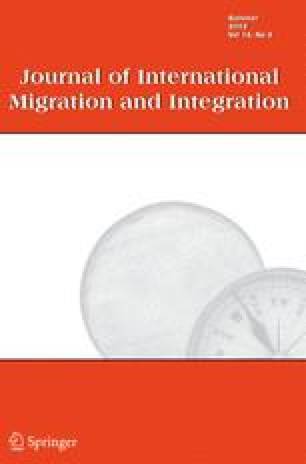Journal of International Migration and Integration, often referred to as JIMI, is a general migration journal with a primary focus on arrival, settlement and integration in high-income countries, including policy aspects of these processes. The journal grew out of the International Metropolis Project, a partnership of policy-makers, researchers and civil-society representatives. Canada has played a key role in this initiative and about a quarter of JIMI articles are written by Canada-based authors.
How established is it?
Journal of International Migration and Integration is 23 years old (launched in 2000) and is published by Springer. The journal publishes about 60 articles per year. It is included in 4 of the databases used for compiling the PRIO Guide to Migration Journals (Google Scholar Metrics, Scimago Journal Ranks, Scopus, and Web of Science Core Collection).
How much are the articles cited?
The proportion of articles in Journal of International Migration and Integration that are cited at least once within a few years of publication is higher than average for journals included in the guide. The average number of citations to each article is about average. See Scimago for additional information on citations.
What are the options for open access?
Journal of International Migration and Integration has a hybrid publication model, meaning that only subscribers have access to all articles, but that individual articles can be made open access on the basis of paying a fee. This journal has committed to a transformative plan, meaning that after at transition period, every article will be subject to a processing charge and the entire journal will be open access. See the journal's Sherpa Romeo page about the conditions for sharing the accepted manuscript online (Green Open Access).
How long are the articles?
Journal of International Migration and Integration invites articles of up to 7500 words. For more information about submissions and access to past articles, see the journal's web site.






